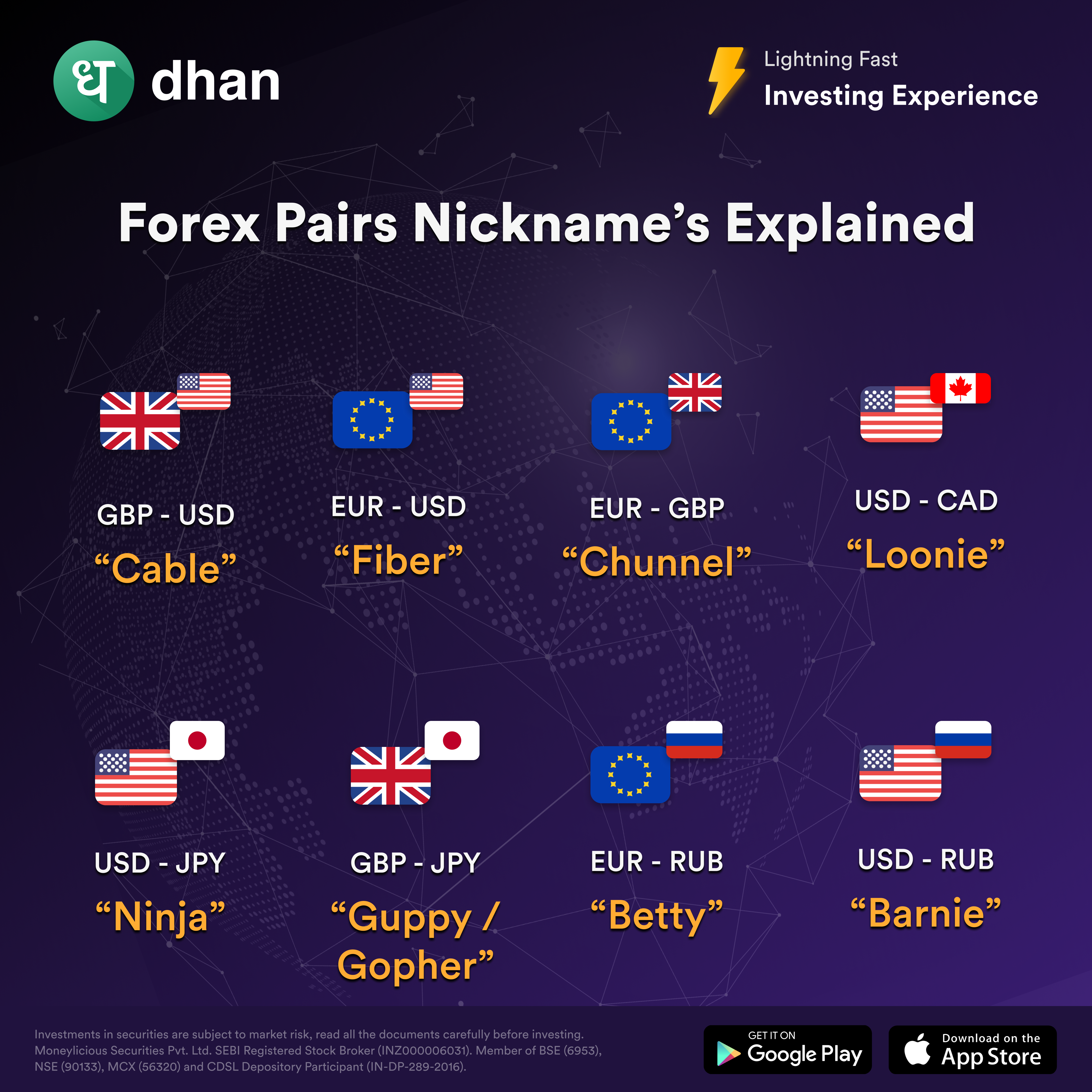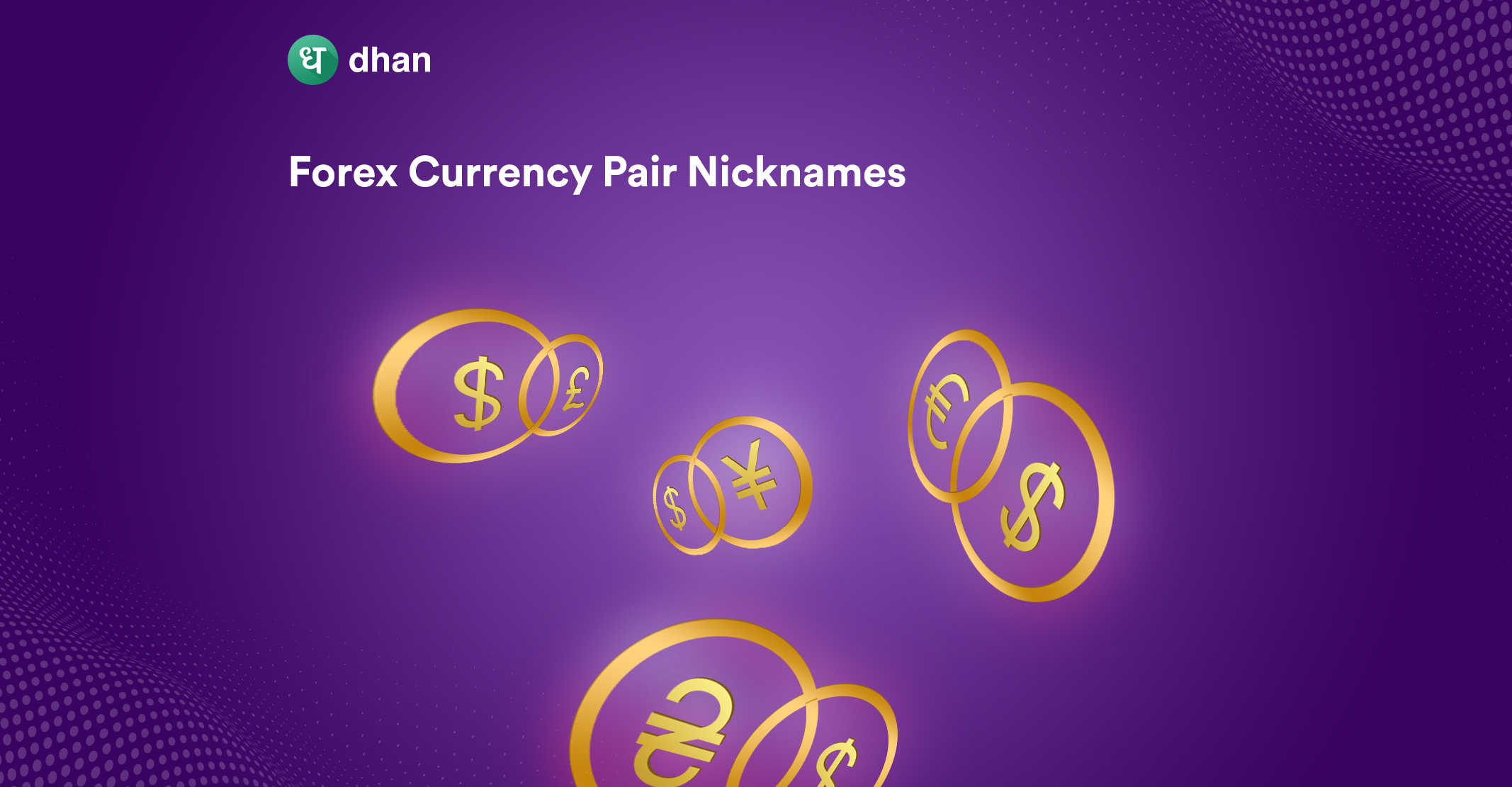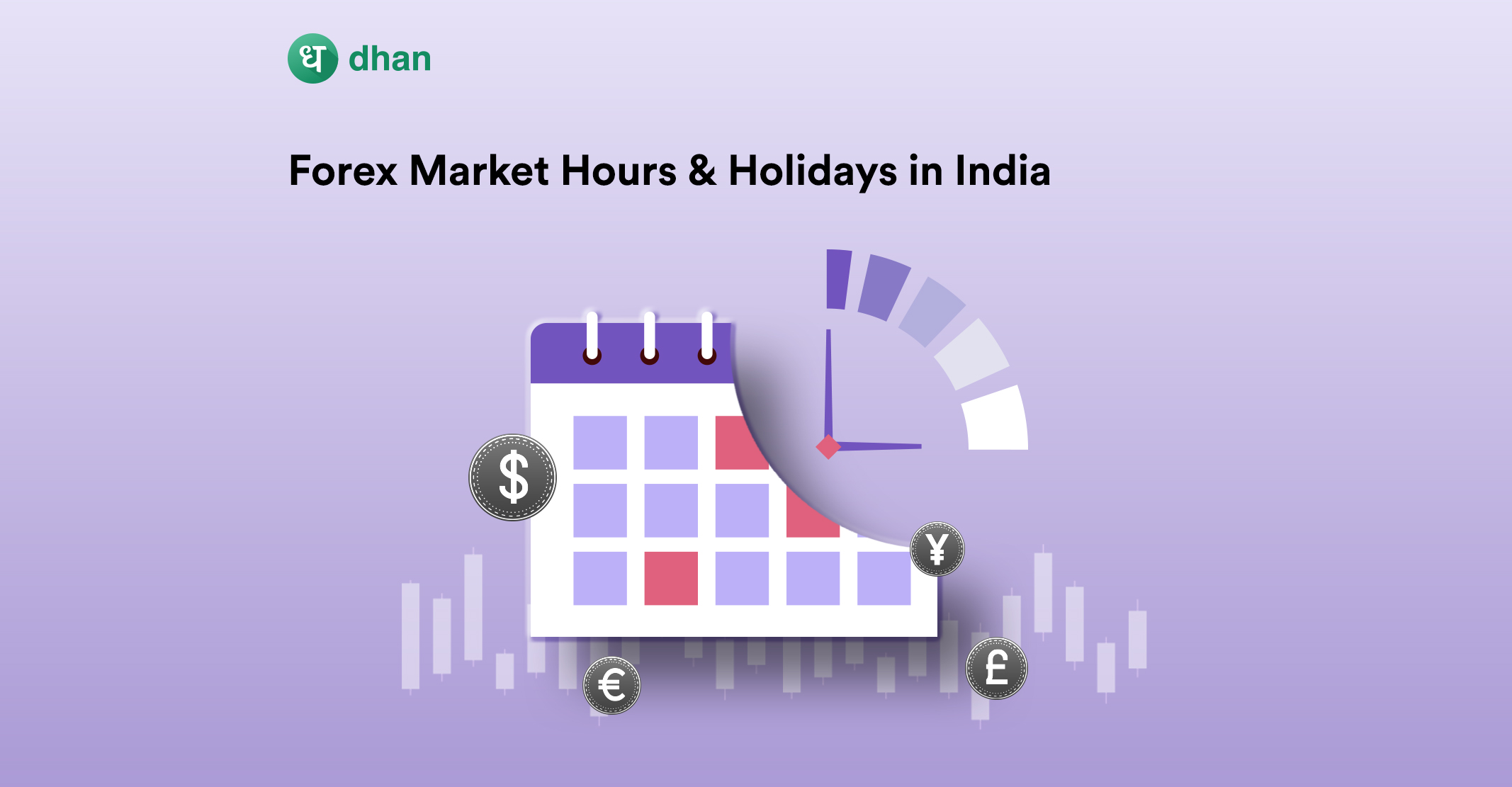Forex trading can be intense. Traders have to pore over charts, indicators, and strategies the whole day. But, there are things in forex trading that can help take the steam off. The best example of this is forex nicknames.
Many forex pairs have nicknames rooted in history, making forex trading all the more interesting. We’ve covered the most important currency pair nicknames right here!
Forex Currency Nicknames & Meaning
Every major currency on the planet has a nickname. In India, you would’ve heard people call INR Rupiah. Similarly, these are the forex nicknames traders and non-traders use on a daily basis.
| Currency | Forex Nickname |
| USD | Greenback/Buck |
| GBP | Sterling |
| CHF | Swissy |
| CAD | Loonie |
| AUD | Aussie |
| NZD | Kiwi |
1. USD: Greenback
The United States Dollar (USD) is known to be one of the strongest currencies in the world and the forex market. It’s also known by the name “Greenback”. There’s a historical context to this.
Back when the US was going through a civil war in the 1800s, the government decided to run an experiment by printing and issuing paper currency. The notes representing the new currency were green on the flipside (the back).
That’s how the name Greenback caught on. It was a literal nickname. Fast forward to 2022, the USD is often referred to as Greenback although it has other names like Benjis and Paper.
2. GBP: Sterling
The Great Britain Pound (GBP) is the de facto currency of the United Kingdom. To understand the reason why GBP is called the Sterling, we need to travel back in time.
In fact, we’ll have to travel all the way back to the era of the Saxon Kingdom when silver coins called “Sterling” were issued. These Sterling coins were minted using a pound of silver. That’s why GBP is called Pound Sterling.
3. CHF: Swissy
CHF or the Swiss Franc is used as legal tender in Switzerland and Liechtenstein. If you’re wondering why the Swiss Franc is abbreviated as CHF, it is rooted in language.
The currency is legal tender in “Confoederatio Helvetica” which is the Latin name for the Swiss Confederacy. In forex trading, the CHF is called Swissy because it’s used by the Swiss.
4. CAD: Loonie
The Canadian Dollar (CAD) is often referred to as the “Loonie” because of the Loon that’s present on the flipside of the CAD $1 coin. The Loon is an aquatic bird similar to the duck. The Loonie’s history starts in 1987.
Printing paper currency was costly. That’s why the Canadian Government introduced the Loonie. It was a low-cost alternative to the CAD $1 paper note. The term Loonie, however, was popularized in the forex market by dealers and then eventually currency traders.
The term became popular by leaps and bounds, so much so that the Royal Canadian Mint trademarked “Loonie”, which is often traded as a type of currency pair (major and minor) with the EUR, GBP, and USD.
5. AUD: Aussie
The Australian Dollar (AUD) has a topsy-turvy history. It was launched in 1966 and was pegged to the Sterling standard. The very next year, it moved away from the GBP and was pegged to the USD.
It wasn’t until 1983 that the AUD finally became a free-floating currency that was not pegged to any other foreign currency. The AUD’s forex nickname is Aussie as it is related to the nation of Australia.
Citizens and sports teams from the country are called Aussie(s). The name has caught on in the forex market as well, which is why the AUD is called Aussie or Ozzie due to the way it is pronounced in English-speaking nations.
6. NZD: Kiwi
Another national currency from down under, the New Zealand Dollar (NZD) was launched in 1967. It was pegged to the Pound Sterling and USD standard just like the AUD but moved away from it in 1985.
If you’ve heard commentary on sports, you’d notice that New Zealanders are called Kiwi because of the bird with the same name. The Kiwi is a flightless bird that’s only found in New Zealand. It’s also the nation’s icon and symbol.
That’s why most things from New Zealand are known as Kiwi, including the NZD. The NZD is traded as a minor type of currency pair while cross-currency pairs for it also exist.
Forex Currency Pair Nicknames & Meaning
What we know as the forex market today exists as a relatively well-regulated, 24*5 marketplace. However, the concept of forex trading isn’t new – it’s been going on for centuries.
Some of the oldest currencies in the world like the USD, GBP, EUR, and others have been exchanged for one another throughout the ages. For example, USD-GBP has been changing hands since the 1800s.
If something’s been around for that long, it’s bound to have a nickname. That’s why currency pair nicknames exist as they make things simple and are often rooted in history.
| Forex Pair | Forex Nickname |
| GBP-USD | Cable |
| EUR-USD | Fiber |
| EUR-GBP | Chunnel |
| USD-CAD | Loonie |
| USD-JPY | Ninja |
| GBP-JPY | Guppy/Gopher |
| EUR-RUB | Betty |
| USD-RUB | Barnie |
1. GBP-USD: Cable
The GBP and USD have been traded since the 1800s. As communication became more efficient in the mid-1800s, forex rates for GBP-USD were communicated using cables. These cables ran across the Atlantic Ocean.
Forex traders like large financial institutions relied on these Cables that transmitted telegraphs and with them, the exchange rates. That’s why GBP-USD’s nickname is Cable.
While the world has moved away from cables, the nickname for GBP-USD has stuck around through the ages. What’s more, Cable was replaced by Fiber both in the context of technology and forex trading. Read on to know more.
2. EUR-USD: Fiber
The EUR was launched in 1999, shortly after which the EUR-USD pair overtook GBP-USD as the top traded currency pair in the world. EUR-USD’s nickname is Fiber. But there’s debate on the origins of the forex pair’s nickname.
Some experts suggest that the EUR-USD was the new GBP-USD, similar to what Fiber was to Cable. Hence the EUR-USD “Fiber” nickname. Others suggest that cotton fiber used in the making of EUR notes was the reason.
3. EUR-GBP: Chunnel
The English Channel separates England and France. There’s a tunnel that runs underneath the waters of the channel, acting as a corridor between the two nations.
Interestingly, the Channel Tunnel was completed around the same time the EUR was launched. That’s why the currency pair nickname was coined “Chunnel”, a combination of the words Channel and Tunnel.
4. USD-CAD: Loonie
The Canadian Dollar (CAD) has a history that dates back to the mid to late 1800s. One could say that CAD’s history is full of twists and turns, having been pegged to the US Dollar unit, Spanish Dollar unit, and an Independent unit.
Eventually, all three were merged into one in the late 1860s. Not long after, the Common Loon, a bird similar to the duck, was added to CAD’s $1 currency.
That’s how the CAD and its North American pair with USD got the name Loonie. You’d often find American forex traders and Canadians themselves using the Loonie nickname for USD-CAD.
5. USD-JPY: Ninja
The Japanese Yen is one of the most traded forex currencies. It became the official currency of Japan in 1871. JPY moved from being on par with the Spanish Dollar and Mexican Dollar to a gold standard.
The Japanese government eventually moved to a free float system in 1973. When the JPY entered the forex market as a pair with USD, it got the nickname Ninja purely because ninjas are home to Japan.
6. GBP-JPY: Guppy
Forex traders call the Euro to Yen pair Yuppy. Similarly, GBP-JPY’s nickname is Guppy. The logic behind the currency pair name is simple. EUR’s EU and JPY’s PY make Euppy, pronounced Yuppy.
Likewise, GBP’s G and JPY’s PY make Guppy. Although there’s another name for the currency pair called Gopher, it’s unclear where this nickname originated from.
7. EUR-RUB: Betty
The Russian Ruble has been in existence since 1992. It replaced the Soviet Ruble. However, the Ruble is also the last name of the Flintstones’ neighbors Barnie and Betty. That’s why the nickname for the currency pair EUR-RUB is Betty.
8. USD-RUB: Barnie
The Flintstones’ neighbor Barnie had the last name Ruble. That’s why the USD-RUB forex pair is often referred to as Barnie. As you may remember, The Flintstones was a popular cartoon show that ran in the 90s.

Conclusion
Currency pair nicknames are the result of history, symbols, convenience, or all three. Thus, forex traders use these nicknames as a way to address pairs easily, as many currency pairs may have interesting nicknames.
Here’s a recap of all the forex nicknames:
- USD: Greenback/Buck
- GBP: Sterling
- CHF: Swissy
- CAD: Loonie
- AUD: Aussie
- NZD: Kiwi
Finally, here are forex pair nicknames:
- GBP-USD: Cable
- EUR-USD: Fiber
- EUR-GBP: Chunnel
- USD-CAD: Loonie
- USD-JPY: Ninja
- GBP-JPY: Guppy/Gopher
- EUR-RUB: Betty
- USD-RUB: Barnie
Enjoyed this? Read other blogs from our Forex Trading series:
1. A Guide to Forex Trading in India: Learn Forex Trading
2. Types of Currency Pairs for Trading in India
FAQs on Currency Pair Nicknames
Q. What is the nickname for a Dollar in forex?
The US Dollar is often addressed by two nicknames: the Greenback or Buck. USD is called Greenback because it was literally green on the flipside when it was initially printed as notes. The term Buck originates from when the US was still a British colony. Back then, buckskins were commonly used as currency, hence the term Buck.
Q. What are the nicknames of currency pairs?
These are the popular nicknames for major, minor, and cross-currency pairs in the forex market:
- GBP-USD: Cable
- EUR-USD: Fiber
- USD-CAD: Loonie
- USD-JPY: Ninja
- EUR-GBP: Chunnel
- GBP-JPY: Guppy
- USD-RUB: Barnie
- EUR-RUB: Betty
Q. Which currency pair has a nickname cable?
Britain’s GBP and USA’s USD pair is nicknamed the “Cable” because cables running through the Atlantic ocean were used to communicate the forex rates for the two currencies in the 1800s & 1900s.
Q. Why is EURUSD called fiber?
GBP-USD was once the highest-traded currency pair in the world. When EUR was launched, it replaced GBP in the pair and EUR-USD became the most traded forex pair. As EUR was the new GBP in the equation, forex traders simply upgraded “Cable” (GBP-USD nickname) to Fiber.
Disclaimer: This blog is not to be construed as investment advice. Trading and investing in the securities market carries risk. Please do your own due diligence or consult a trained financial professional before investing.




Comments are closed.